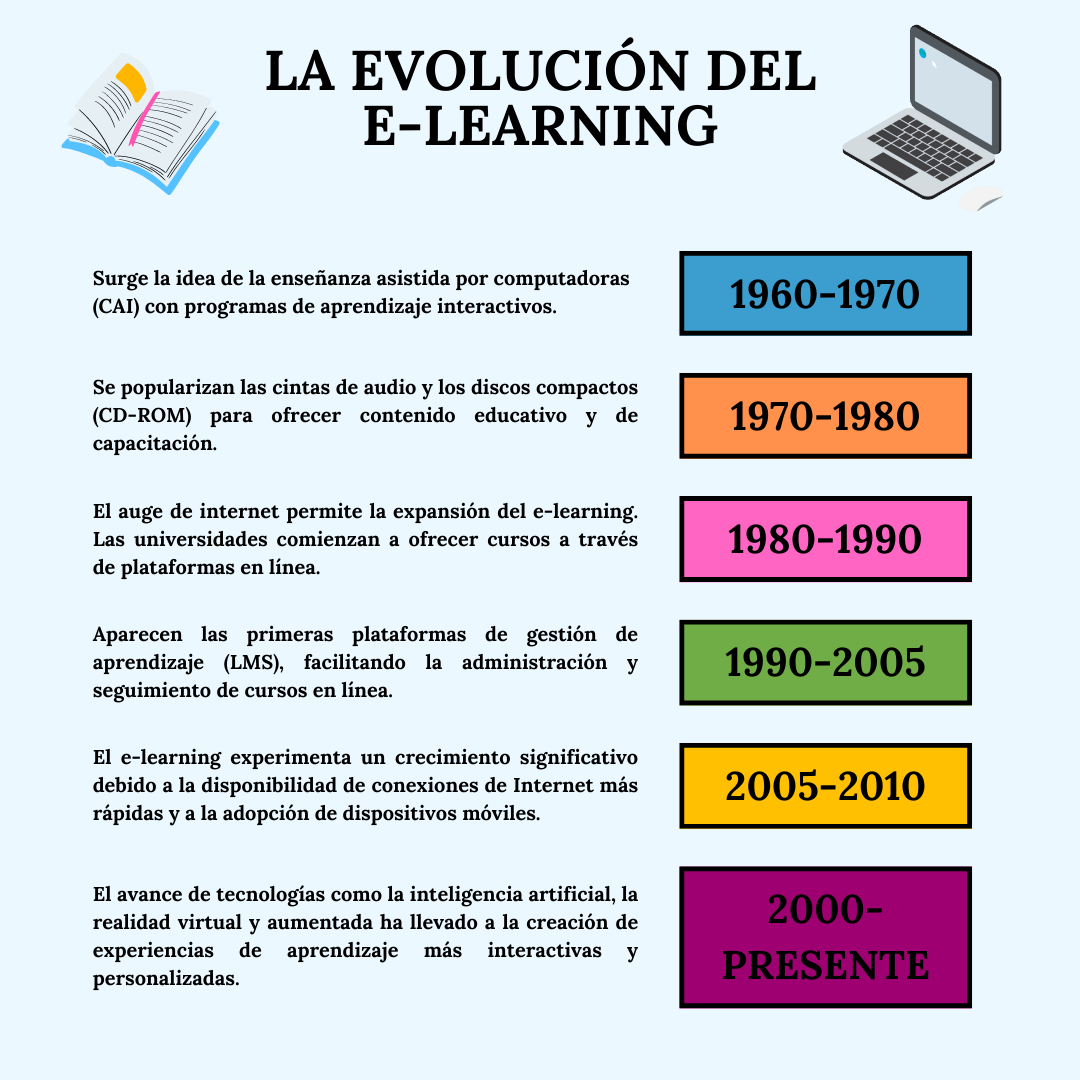The history of e-learning dates back to the 1960s, when researchers and scientists began to explore the potential of technology for distance education. In the following decades, there was a gradual advance in the development of online education:
- 1960-1970: the idea of computer-assisted instruction (CAI) with interactive learning programs emerges.
- 1980: audio tapes and compact discs (CD-ROMs) become popular for providing educational and training content.
- 1990: The rise of the Internet allows e-learning to expand. Universities begin to offer courses through online platforms.
- 2000: the first learning management platforms (LMS) appear, facilitating the administration and monitoring of online courses.
- 2005-2010: e-learning experiences significant growth due to the availability of faster internet connections and the adoption of mobile devices.
- 2010-present: the advancement of technologies such as artificial intelligence, virtual and augmented reality has led to the creation of more interactive and personalized learning experiences.
Today, e-learning is a fundamental part of the education and training landscape worldwide, offering flexible and accessible learning opportunities for a wide range of people and industries.


